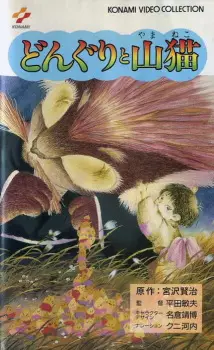
Kenji Miyazawa

Animeography


Cello Hiki no Gauche
add Original Creator
Cello Hiki no Gauche (1982)
add Original Creator
Cello Hiki no Gauche (OVA)
add Original Creator
Chuumon no Ooi Ryouriten
add Original Creator
Chuumon no Ooi Ryouriten (1991)
add Original Creator
Chuumon no Ooi Ryouriten (1993)
add Original Creator
Donguri to Yamaneko
add Original Creator
Donguri to Yamaneko (1995)
add Original Creator
Ginga Tetsudou no Yoru
add Original Creator
Ginga Tetsudou no Yoru: Fantasy Railroad in the Stars
add Original Creator
Guskou Budori no Denki
add Original Creator
Guskou Budori no Denki (2012)
add Original Creator
Ihatov Gensou: Kenji no Haru
add Original Creator
Kaze no Matasaburou
add Original Creator
Kaze no Matasaburou (Movie)
add Original Creator
Kenji no Trunk
add Original Creator
Taneyamagahara no Yoru
add Original Creator
Yodaka
add Original Creator
Yodaka no Hoshi
add Original Creator
Yukiwatari
add Original Creator
Zenchuu Maite
add Original CreatorMangaography
About
Miyazawa was born in what is now Hanamaki city, Iwate Prefecture as the eldest son of a wealthy pawnbroker. From an early age, he was disturbed by what he perceived to be the social inequity between his well-to-do family and the impoverished farmers in the area from whom his family profited by lending them money. From 1926 until his death in 1933, Miyazawa struggled to improve the material and spiritual life of the impoverished peasants of his native Iwate. He introduced new agricultural techniques and new varieties of seeds. He left his position as instructor at Hanamaki Agriculture School in 1926 to establish the Rasu Farmers Association. At the detached house of his family, where he was staying at the time, he gathered a group of youths from nearby farming families and lectured on agronomy. The association also engaged in plays, music, and other cultural activities. His writings from this period show sensitivity for the land and for the people who work in it. A prolific writer of children's stories, many that appear superficially to be light or humorous, all contain stories intended for moral education of the reader. He wrote some works in prose and some stage plays for his students and left behind a large amount of tanka and free verse, most of which was discovered and published posthumously. His poetry, which has been translated into numerous languages, has a considerable following to this day. A number of his children’s works have been made into animated movies (anime) in Japan. (Source: Wikipedia)



